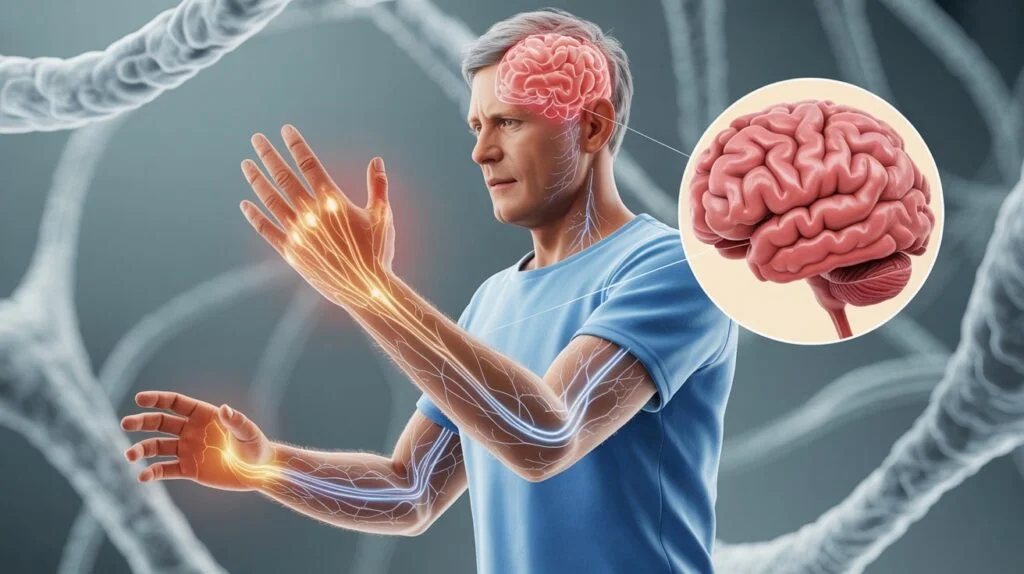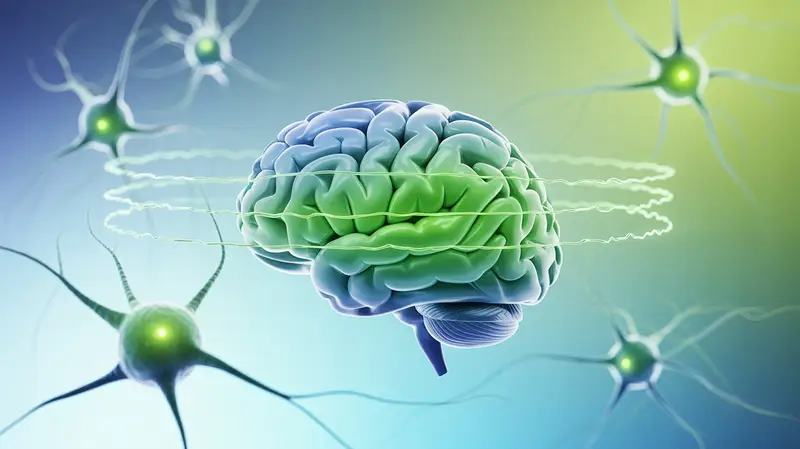Mozimalletom: Symptoms, Causes, Diagnosis & Treatments Explained!
Mozimalletom is a rare neurological disorder that affects how the brain controls movement and balance. It causes symptoms like tremors and unsteady walking due to faulty connections between brain cells. Understanding mozimalletom helps with early diagnosis and better treatment options.
Stay tuned with us for more updates on Mozimalletom — we’ll cover symptoms, causes, and treatments soon!
What Is Mozimalletom, and Why Is It Considered a Complex Neurological Disorder?
Mozimalletom is a rare neurological disorder that affects how the brain sends signals. It mainly impacts the nervous system, especially in areas that control movement and balance. People with mozimalletom may feel shaky, lose control of hand movements, or find it hard to walk without support.
What makes mozimalletom so complex is how it affects the connections between brain cells. These connections, called synapses, help the brain work smoothly. In mozimalletom, these connections don’t work as they should. This causes problems with how the brain controls muscles and balance.
Doctors started noticing mozimalletom in the 1980s, but it was hard to understand at first. Since then, new research has helped doctors learn more about it. Still, mozimalletom remains a rare and puzzling condition that needs more attention.
This disorder is not easy to detect, and no two people experience it the same way. That’s why it is called a complex neurological disorder. More studies and better tools are helping scientists understand mozimalletom and find ways to treat it better.
What Are the Main Symptoms of Mozimalletom to Watch For?

The main symptoms of mozimalletom affect movement and balance. People with mozimalletom often experience tremors in their hands or arms. These tremors come and go, especially when trying to do tasks that need steady hands, like writing or holding small objects.
Another common sign is trouble with balance. Someone with mozimalletom might feel unsteady when standing or walking. This can make everyday activities harder and increase the risk of falls.
Some patients also notice their movements become less smooth. Actions like reaching for something or walking can feel shaky or awkward.
Besides these, changes happen at a small cell level, especially in cells called epithelial cells, which might play a role in the disease. All these signs together help doctors recognise mozimalletom and differentiate it from other disorders.
If you or someone you know shows these symptoms, it’s important to see a doctor for proper testing and diagnosis.
What Causes Mozimalletom, and Could It Be a Genetic Condition?
It plays a big role in causing this rare disorder. These connections, called synapses, don’t work properly in people with mozimalletom, which leads to movement and balance issues.
Research also points to possible changes in certain genes that might increase the risk of developing mozimalletom. This means that for some people, mozimalletom could have a genetic link, passed down from parents to children. However, more studies are needed to confirm how much genetics influences this disease.
Besides genetics, other factors like changes in the brain’s cell structures might also contribute to mozimalletom. Understanding these causes better will help doctors find new ways to treat and manage the condition. The exact causes of mozimalletom are still not fully understood. Scientists believe that problems with the way brain cells connect and communicate.
How Do Medical Professionals Diagnose Mozimalletom Accurately?
Diagnosing mozimalletom can be challenging because its symptoms are similar to other neurological disorders. Doctors begin with a detailed medical history and a careful physical exam, focusing on signs like tremors and balance problems.
To confirm the diagnosis, specialists use several tests. Imaging tools like MRI scans help look at the brain to find areas affected by mozimalletom. Genetic tests may also be done to check for specific changes linked to the condition.
Doctors may analyse cells, including epithelial cells, to see if there are changes that support the diagnosis. Combining clinical exams, brain imaging, and lab tests helps ensure a more accurate and reliable diagnosis of mozimalletom.
Early and precise diagnosis is important to start the right treatment and improve patient outcomes.
How Do Medical Professionals Diagnose Mozimalletom Accurately?
Diagnosing mozimalletom can be challenging because its symptoms are similar to other neurological disorders. Doctors begin with a detailed medical history and a careful physical exam, focusing on signs like tremors and balance problems.
To confirm the diagnosis, specialists use several tests. Imaging tools like MRI scans help look at the brain to find areas affected by mozimalletom. Genetic tests may also be done to check for specific changes linked to the condition.
Doctors may analyse cells, including epithelial cells, to see if there are changes that support the diagnosis. Combining clinical exams, brain imaging, and lab tests helps ensure a more accurate and reliable diagnosis of mozimalletom.
Early and precise diagnosis is important to start the right treatment and improve patient outcomes.
What Treatment Options Are Available for Managing Mozimalletom Symptoms?

Treating mozimalletom focuses on reducing symptoms and helping patients live better lives. Doctors usually start with medications that target the brain’s chemical signals to improve movement and reduce tremors. These medicines aim to support the brain’s synapses and improve how nerve cells communicate.
Alongside medicine, physical therapy plays a big role. Exercises help improve balance, coordination, and muscle strength, making daily activities easier and safer.
In some cases, speech therapy may be needed if mozimalletom affects communication. For patients with severe or resistant symptoms, advanced treatments like deep brain stimulation are being studied. This technique uses small electrical impulses to control brain activity and reduce symptoms.
Overall, treatment for mozimalletom is personalised. Doctors work closely with patients to find the best combination of therapies to manage symptoms and improve quality of life.
How Can People Living with Mozimalletom Improve Their Quality of Life?
Living with mozimalletom can be challenging, but there are ways to make daily life easier and more enjoyable. Regular physical therapy helps improve balance and coordination, which can reduce falls and increase independence.
Patients should also follow their treatment plans carefully, including taking prescribed medications to manage symptoms like tremors. Healthy habits like a balanced diet, enough rest, and gentle exercise can support overall brain and body health.
Support from family, friends, and healthcare teams is important. Joining support groups or talking to others with mozimalletom can provide encouragement and useful tips.
Finally, adapting the home environment—like using assistive devices or making spaces safer—can help people with mozimalletom stay active and confident in their daily routines.
How Is Mozimalletom Being Studied in Modern Medical Research?
Modern medical research is working hard to understand mozimalletom better. Scientists focus on how brain cells and their connections, called synapses, are affected in this rare disorder. Advanced imaging techniques, like functional MRI, allow researchers to see changes in the brain areas involved with mozimalletom.
Genetic studies are also important. Researchers are looking for specific gene mutations that might cause or increase the risk of mozimalletom. These discoveries could lead to earlier diagnosis and new treatments.
Laboratory experiments using cell cultures help scientists study how mozimalletom changes brain cells at a microscopic level. Around the world, doctors and scientists collaborate to share findings and speed up progress.
These ongoing research efforts aim to find better ways to diagnose, treat, and one day prevent mozimalletom.
What Recent Scientific Discoveries Have Helped Advance Our Understanding of Mozimalletom?
Recent research has provided valuable insights into mozimalletom, a rare neurological disorder. Scientists are focusing on how brain cells and their connections, known as synapses, are affected in this condition. Advanced imaging techniques, such as functional MRI, allow researchers to observe changes in brain areas involved with mozimalletom.
Genetic studies are also crucial. Researchers are investigating specific gene mutations that might cause or increase the risk of mozimalletom. These discoveries could lead to earlier diagnosis and new treatments.
Laboratory experiments using cell cultures help scientists study how mozimalletom changes brain cells at a microscopic level. Around the world, doctors and scientists are collaborating to share findings and speed up progress.
These ongoing research efforts aim to find better ways to diagnose, treat, and one day prevent mozimalletom.
Is Mozimalletom Inherited or Passed Through Genetic Mutations?
Scientists are still learning about whether mozimalletom is inherited. Current research suggests that some cases may be linked to genetic mutations—changes in specific genes that affect how brain cells communicate.
These mutations might be passed down from parents to children, meaning mozimalletom could run in families. However, this isn’t confirmed for all cases, and other factors may also contribute.
More studies are needed to understand the role of genetics in mozimalletom fully. Knowing this better could help with early diagnosis and personalized treatments in the future.
Are There Any Known Ways to Prevent Mozimalletom?

Currently, there are no known ways to prevent mozimalletom. Because the exact causes of this rare neurological disorder are still being studied, prevention methods have not been established.
Scientists are working to understand the role of genetics and brain cell connections in mozimalletom, but until more is known, prevention remains unclear.
People at risk should focus on early diagnosis and treatment to manage symptoms effectively. Ongoing research may one day lead to ways to prevent mozimalletom, but for now, prevention is not possible.
FAQ.s
1. Can Mozimalletom Affect Cognitive Functions Beyond Motor Skills?
Many neurological disorders impact cognition. It’s important to know if mozimalletom also affects memory, attention, or other mental functions beyond movement and balance.
2. What Lifestyle Changes Can Help Manage Mozimalletom Symptoms?
Besides medical treatments, are there daily habits, diets, or activities that can help reduce symptoms or slow the progression of mozimalletom?
3. Are There Support Groups or Communities for People with Mozimalletom?
Living with a rare disorder can be isolating. Information about patient support groups or online communities can help readers find emotional and practical support.
4. How Does Mozimalletom Progress Over Time?
Understanding the typical progression or stages of mozimalletom can help patients and caregivers prepare for changes and plan care accordingly.
5. Are There Experimental Treatments or Clinical Trials Available for Mozimalletom?
Highlighting ongoing clinical trials or emerging therapies can inform readers about cutting-edge options and opportunities to participate in research.
Conclusion
Mozimalletom is a rare and complex neurological disorder that challenges those affected with unique symptoms like tremors and balance difficulties. While the exact causes and prevention methods remain under study, ongoing scientific research continues to unlock important clues about its genetic and cellular origins.
Early diagnosis and personalised treatment plans combining medication, therapy, and emerging technologies offer real hope for managing mozimalletom symptom and improving quality of life. Support from healthcare professionals, family, and communities also plays a vital role in helping patients navigate this condition.
As medical knowledge grows, so does the possibility of more effective therapies and, one day, prevention strategies for mozimalletom. Staying informed and proactive can make a meaningful difference for those living with this rare disorder.
By sharing awareness and advancing research, we can all contribute to better futures for people impacted by mozimalletom.













Post Comment